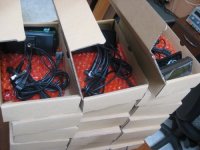If you are reading thru this thread, you should note that it hasnt' even finished beta, and now is on hold till Justin is recovered, so I can't imagine it being avaialble in time. You'd have to check directly with Grin Tech to be sure, though.wannesd said:I can't decide whether to buy the CA V2 or V3, as I would need it in 2 weeks time.
Any updates as to when the v3 would become available?
Personally, I'd hold off till it *is* available, if you need those features. If you don't, then there is no reason to wait at all.




